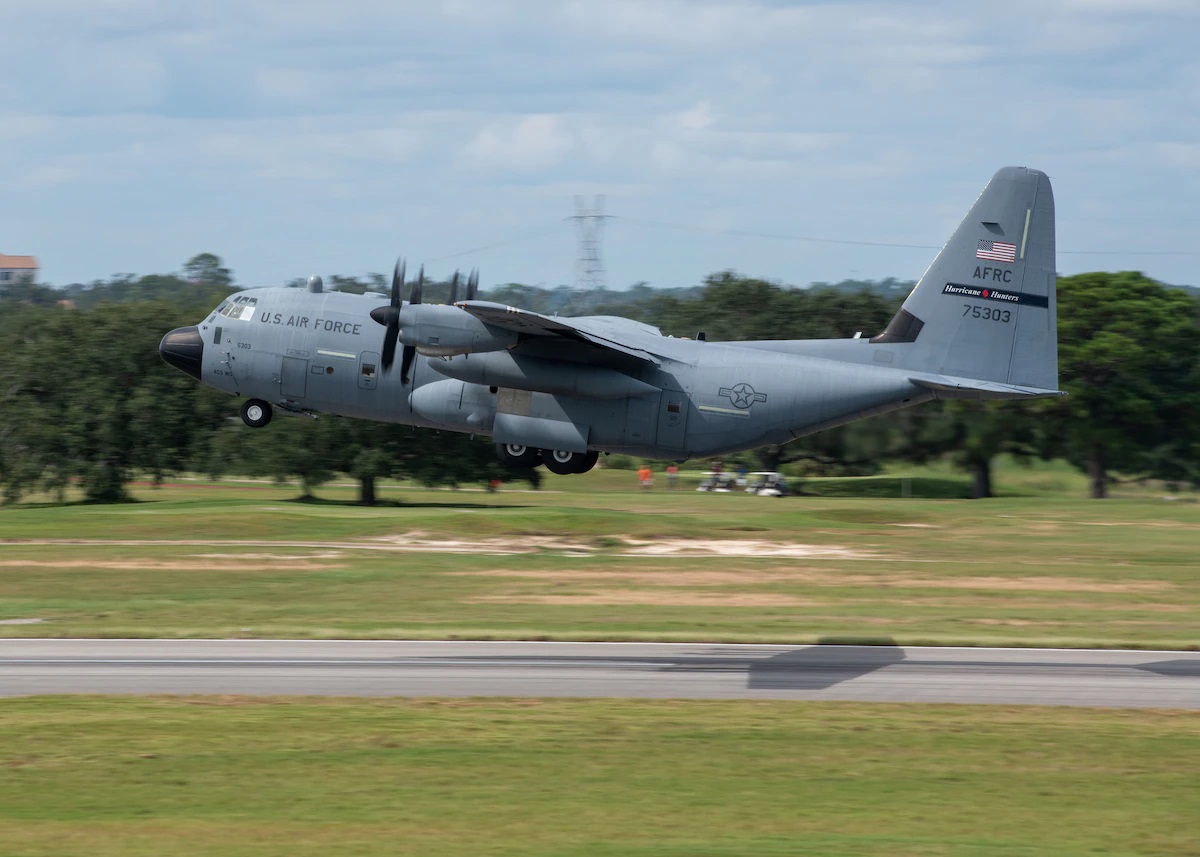For the Air Force Reserve’s 53rd Weather Reconnaissance Squadron Hurricane Hunters, stationed at Keesler Air Force Base, the ability to transmit data in flight is tantamount to mission success. The aerial reconnaissance weather officer sits adjacent, quality checking the figures from the dropsonde, as it plummets to the ocean’s surface, and from the stepped frequency microwave radiometer attached to the wing of the aircraft. As one of their WC-130J Super Hercules powers through a hurricane, a loadmaster is in the back, preparing and launching dropsondes that collect atmospheric data. From there, all pertinent information that can help forecasters better predict the storm’s intensity and track is sent directly from the aircraft to the National Hurricane Center, Florida, or the Central Pacific Hurricane Center, Hawaii. To accomplish all of this, the 53rd WRS’s 10 WC-130Js are equipped with satellite communications capabilities.
“With our current system, we’re able to send data we collect in intermittent bursts throughout the flight. This new SATCOM system will allow us to send data continuously, including sending video of the radar imagery we’re seeing on our screens on the aircraft to the people on the ground. We tested for compatibility and functionality to make sure it’s not going to harm any other parts or functions of the airplane’s normal systems like taking off, cruising, and commanding. We tested to make sure the system could transmit data and be received on the ground.
The setup used for testing is called the C-130 X-Band Multi-Purpose Hatch System Solution SATCOM System and includes a hatch mounted satellite antenna, a portable base kit, and a laptop,” said Lt. Col. Tobi Baker, 53rd WRS ARWO.

Ed Bodony, Center Test Authority test director at Robins AFB, Georgia, and 1st Lt. Makiah Eustice, flight engineer for the CTA, made the trip to test a protocol satellite communications system that will allow those on the ground to see high-definition video of radar footage from flights as they fly through a storm.
For this initial testing portion, Bodony and Eustice as well as representatives from the companies behind the technology, first conducted a ground test. If all goes well, and the 53rd (WRS) moves forward with this technology, a permanent design will be constructed and installed. This two-day process was just to qualify and confirm that the equipment works. Next is operational testing. A different crew of engineers will come in and they’ll test its capabilities in an actual storm environment.
While for years the squadron’s 10 aircraft have been able to send the atmospheric data collected from the dropsondes and SFMRs, new technology is being tested that will allow more real-time information for the NHC concurrent with the National Hurricane Operations Plan’s requirements of radar reflectivity imagery and high density, three-dimensional Doppler radial velocities of the tropical cyclone core circulation. The 18-inch electronically steerable parabolic antenna, enclosed in what is called a radome, is inserted and protrudes from the escape hatch on the flight deck while connected to the base kit in the back of the aircraft, which consists of a power distribution unit, power supply, tactical switch, modem, and router. Of course, unlike other weapons systems and testing, it’s difficult to plan operational testing when it’s dependent on the weather, so the unit will have to wait for a storm to develop to complete the process.
